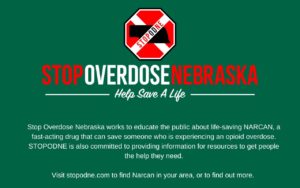
Request your FREE drug disposal kit on our online form here.
(Include your address and if you need a single or multi medication disposal, we will mail it directly to you) Make your home and community safer by utilizing ASAAP’s Year-Round Drug-Take Back.
What are Opioids?
Opioids are a class of drugs naturally found in the opium poppy plant. Some prescription opioids are made from the plant directly, and others are made by scientists in labs using the same chemical structure. Opioids are often used as medicines because they contain chemicals that relax the body and can relieve pain. Opioids can also make people feel very relaxed and “high” – which is why they are sometimes used for non-medical reasons. This can be dangerous because opioids can be highly addictive, and overdoses and death are common. Heroin is one of the world’s most dangerous opioids, and is never used as a medicine in the United States. Nearly 1 in 3 Americans knows someone who’s addicted to opioids or has been in the past, according to a 2018 poll from the American Psychiatric Association. Opioids can be About 80% of heroin users began with prescription opioids, according to the National Institute on Drug Abuse.
Commonly prescribed opioids.
hydrocodone (Vicodin®) oxycodone (OxyContin®, Percocet®)oxymorphone (Opana®)morphine (Kadian®, Avinza®)codeinefentanyl. Popular slang terms for opioids include Oxy, Percs, and Vikes.
How do people misuse opioids?
Prescription opioids used for pain relief are generally safe when taken for a short time and as prescribed by a doctor, but they can be misused. People misuse prescription opioids by taking the medicine in a way or dose other than prescribed Taking someone else’s prescription medicine Taking the medicine for the effect it causes to get high If you suspect someone has overdosed, the most important step to take is to call 911 so he or she can receive immediate medical attention.
You may have this drug, they are easy to access for most people.
Get them gone, and request a free envelope today.
ASAAP staff can provide an educational presentation on community health crisis and general opioid education for agencies, community groups, students, and pharmacies/Doctors’ offices. Email info@asaap-ne.org to request a presentation!
What is Naloxone/Narcan?
Naloxone, or Narcan is a medicine that quickly reverses an opioid overdose. Naloxone attaches to opioid receptors and reverses and blocks the effects of other opioids. Naloxone can quickly restore normal breathing to a person if their breathing has slowed or stopped because of an opioid overdose. The administration of Naloxone/Narcan is very safe, it has no effect on someone who does not have opioids in their system, and it is not a treatment for opioid use disorder.
How is naloxone given?
Naloxone should be given to any person who shows signs of an opioid overdose or when an overdose is suspected. Naloxone can be given as a nasal spray or it can be injected into the muscle, under the skin, or into the veins. Steps for responding to an opioid overdose can be found in the Substance Abuse and Mental Health Administration’s (SAMHSA) Opioid Overdose Prevention Toolkit.
Signs of overdose.
Opioid overdose is life-threatening and requires immediate emergency attention. Recognizing the signs of opioid overdose is essential to saving lives.
Call 911 immediately if a person exhibits ANY of the following symptoms:
- Their face is extremely pale and/or feels clammy to the touch
- Their body goes limp
- Their fingernails or lips have a purple or blue color
- They start vomiting or making gurgling noises
- They cannot be awakened or are unable to speak
- Their breathing or heartbeat slows or stops
If you suspect at any point that someone is overdosing on opioids, administer Naloxone/Narcan, it will not harm the individual.
Visit stopodne.com for a list of local pharmacies that have Narcan for free.
